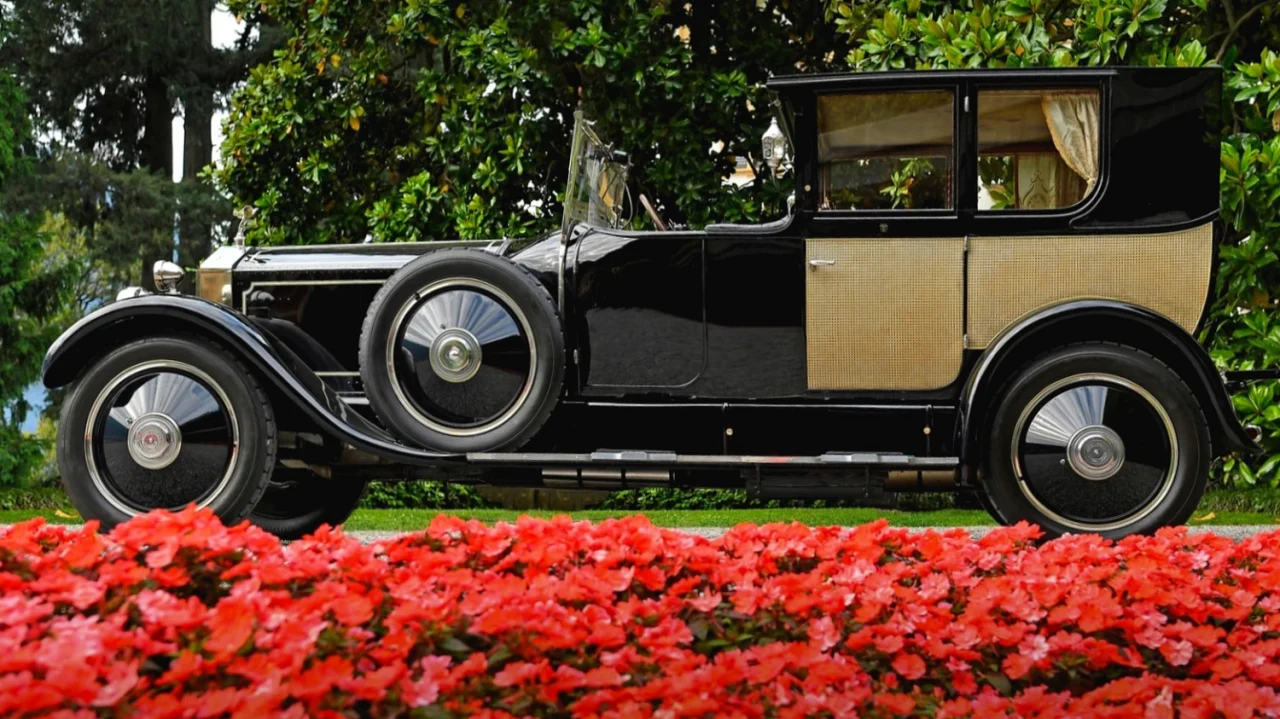Rolls-Royce offers a variety of different vehicles these days. The Spectre is its first EV. Those looking for the ultimate luxury SUV can get a Cullinan Series II. More traditional RR aficionados have the Ghost and Ghost Extended Series II models as options. But for those who want the flagship Rolls-Royce sedan, there’s only one choice: Phantom. And it’s been that way since 1925.
NEW PHANTOM (PHANTOM I)
Even though the 40/50 H.P. (aka the Silver Ghost) was deemed “the best car in the world,” by 1921, it needed to give way to a more advanced model. Rolls-Royce announced its successor in an ad in The Times Newspaper on May 2, 1925:
“Rolls-Royce Ltd beg to announce that, after prolonged tests, they can now demonstrate and accept orders for a new 40/50 H.P. chassis. The 40/50 H.P. chassis hitherto manufactured by them will be sold as before… The original chassis of this type was the famous Silver Ghost, and to prevent confusion such chassis will be known as the Silver Ghost model, whereas the new chassis will be known as the New Phantom.”
According to the automaker, it’s likely that its Commercial Managing Director at the time, Claude Johnson, came up with the Phantom name because he knew how certain monikers could convey quietness and grace. He came up with other names, but The Dreadnought, The Cookie, Yellow Bird, and The Elusive Pimpernel just don’t have the same ring to them.
As they do with the current Phantom, clients requested the New Phantom with certain individualized features. Some ordered safes; one person wanted a secret compartment for storing diamonds. No word on if someone configured their car with a dedicated space for Grey Poupon.

PHANTOM II
Four years later, The Times ran another ad, this time highlighting the Phantom II. There was one person who wasn’t happy with its dimensions: co-founder Charles Rolls. He found the Phantom II too big for driving across France to his winter home on the Côte d’Azur. Designers responded by topping a Phantom II chassis with a trimmer body, creating the 26EX (EXperimental). It didn’t stay experimental for long. Customers wanted a car like the 26EX for high-speed touring so much that Rolls-Royce produced the appropriately named Phantom II Continental.

PHANTOM III
American manufacturers indirectly played a major role in the development of the third-generation Phantom, which debuted in 1936. The fact that they offered their cars with 8-, 12-, and even 16-cylinder engines drove Rolls-Royce to replace the outgoing Phantom’s I6 with a V12. Output increased from 120 to 165 horsepower, eventually topping out at 180. Thanks to a shorter wheelbase, lighter steering, re-positioned gear and brake levers, a four-wheel independent suspension, and wider rear seats, the Phantom III‘s comfort also reached another level.

PHANTOM IV
Following a halt in car production for WWII and in response the subsequent economic conditions, Rolls-Royce produced its Rationalised Range of vehicles. Starting with the I6-powered Silver Wraith in 1946, the Rationalised Range was cheaper to produce, less complex, and easier to service.
Thanks to the British Royal Family, the Phantom returned for a fourth – albeit short – generation. It had traditionally used a fleet of Daimlers, but those vehicles had reached the end of their service. In 1950, the Royal Household asked Rolls-Royce for a formal limousine. It responded with a one-off, H. J. Mulliner-bodied limousine with straight-8 power, codenamed “Maharajah.” Other royals and heads of state expressed interest in similar cars, leading to the resurrection of the Phantom name for a run of 18 Phantom IVs.

PHANTOM V
The fifth-generation Phantom was introduced in 1956 and featured coachwork by Rolls-Royce’s in-house firm, Park Ward & Co., as well as outside companies such as James Young Ltd and H. J. Mulliner & Co. (the latter of which would be purchased by the automaker and merged with Park Ward to form Mulliner Park Ward). Production was much higher than that of the Phantom IV, hitting 832 units.

PHANTOM VI
Like its predecessor, the Phantom VI featured bodywork from Mulliner Park Ward and James Young Ltd. Separate air conditioning systems for the front and rear compartments made the passenger experience more tailored and pleasant. The final car of the 374-unit production run, which spanned the 1960s through the 1990s, was delivered to the Sultan of Brunei in 1993 – and the last body-on-frame Rolls-Royce.

PHANTOM VII
The first new Phantom produced under BMW ownership and in Rolls-Royce’s new Goodwood facility was a blend of classic and contemporary elements. Based on an aluminum spaceframe and equipped with a modern V12, the Phantom VII had several hallmarks of historical Phantom design, including “a long wheelbase with the front wheels well to the fore and a minimal front overhang of the bodywork, a long bonnet comprised of a massive expanse of metal along the side, and a rising sweep of the door edge towards the front windscreen pillars.” Inside the cabin was the expected mix of leather, wood, and deep-pile carpeting, but one updated for the times. The Phantom’s newest era officially started when the first customer car was delivered one minute after midnight on January 1, 2003.

PHANTOM VIII
By 2017, it was time for an all-new model. The Phantom VIII uses an evolved version of the last model’s spaceframe known as the Architecture of Luxury. As for the architecture of the interior and other areas, that’s up to what the client wants Rolls-Royce’s Bespoke department to create. So far, the company’s master craftspeople have produced one-offs such as the Phantom Oribe, made in collaboration with Hermes, Phantom Koa, inspired by a rocking chair made out of Hawaiian Koa wood, and Italian Riviera-themed Phantom “Inspired by Cinque Terre.” And let’s not forget the 1-of-1 Phantom Goldfinger styled after the Rolls in the 1964 James Bond movie.


